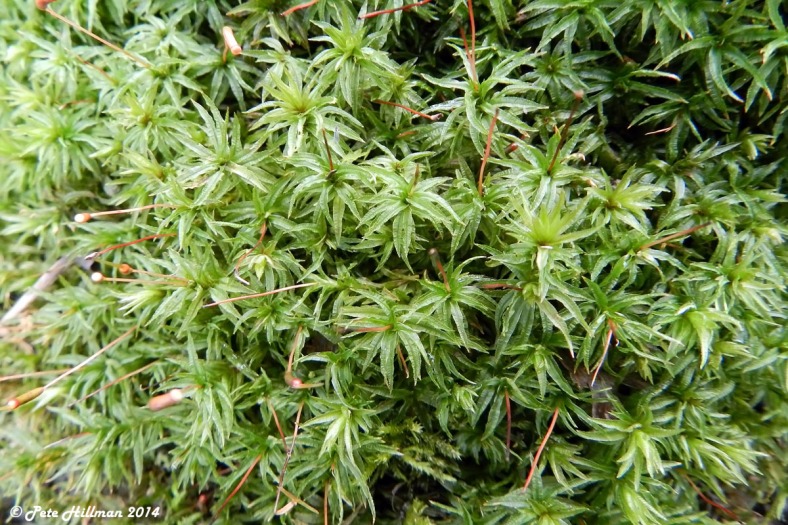An Introduction to Bryophytes: the Mosses, Liverworts and Hornworts
There are around 1100 species of bryophyte in Britain and Ireland. Mosses, liverworts and hornworts comprises a major group of land plants that are evolutionarily quite distinct from the more familiar vascular plants. Only in the last few years has it become apparent that the mon-vascular bryophytes are probably a single group, all more closely related to each other. They are among the earliest land plants and play significant roles in ecosystems worldwide. Bryophytes are characterized by their small size, lack of true roots, stems, and leaves, and their reliance on water for reproduction.
Classification
Kingdom:
Subkingdom:
Phylum:
Phylum:
Phylum:
Plantae (Plants)
Viridiplantae (Green Plants)
Marchantiophyta (Liverworts)
Bryophyta (Mosses)
Anthocerotophyta (Hornworts)
Phylum Marchantiophyta (Liverworts)
Liverworts belong to the division Marchantiophyta and are characterized by their flattened, ribbon-like thallus or leafy structures. Unlike mosses, liverworts exhibit a more primitive morphology and lack specialized conducting tissues. Liverworts reproduce via spores or asexual gemmae, small reproductive structures that detach and develop into new individuals. Liverworts are commonly found in moist environments such as wetlands, stream banks, and shaded forests. They play ecological roles in nutrient cycling and provide habitat for microorganisms and invertebrates. Some liverwort species are used in traditional medicine for their medicinal properties.
Order Marchantiales
Order Lunulariales
Phylum Bryophyta (Mosses)
Mosses are small, herbaceous plants that belong to the division Bryophyta. They are characterized by their leafy structures, known as gametophytes, which lack true roots, stems, or vascular tissues. Mosses reproduce via spores and have a unique life cycle involving alternation of generations between gametophyte and sporophyte stages. The gametophyte is the dominant phase, consisting of leafy stems with structures that produce eggs and sperm. After fertilization, the sporophyte grows on the gametophyte and produces spores through meiosis. Mosses are found in diverse habitats, including forests, wetlands, and alpine regions, where they contribute to soil formation and moisture retention. They are also used in horticulture and landscaping for their ornamental value.
Mosses can be divided into two groups, acrocarps which grow upright, and pleurocarps which have a prostrate habit.
Acrocarps
Acrocarpous mosses have an upright growth habit and grow slower than Pleurocarpous mosses.
Order Polytrichales
Order Dicranales
Order Bryales
Order Grimmiales
Order Funariales
Order Orthotrichales
Pleurocarps
Pleurocapous mosses have a prostrate growth habit and grow quicker than Acrocarpous mosses.
Order Hypnales
All photographs copyright © Peter Hillman
Please see the ‘about‘ page for details on use of images






















